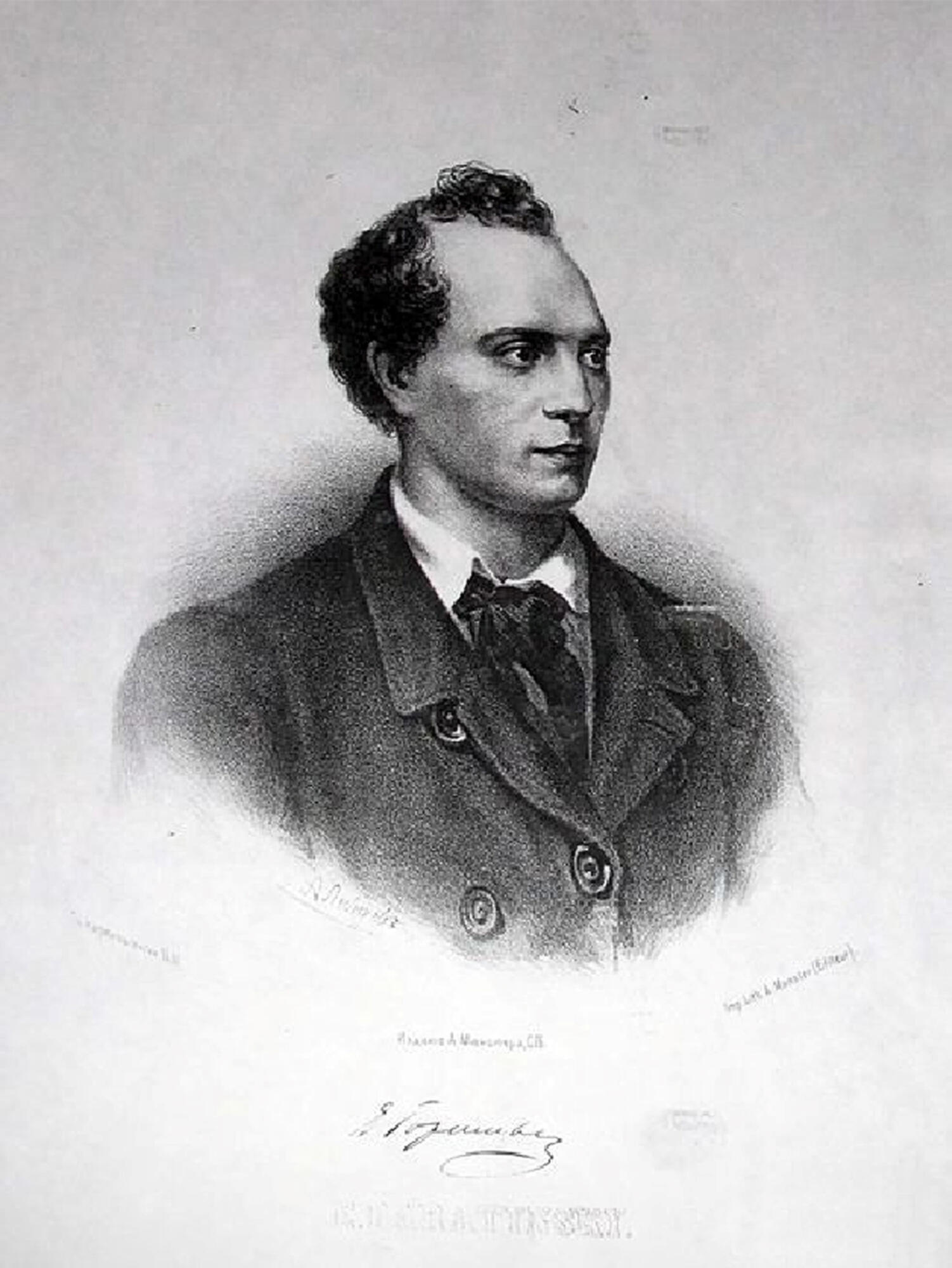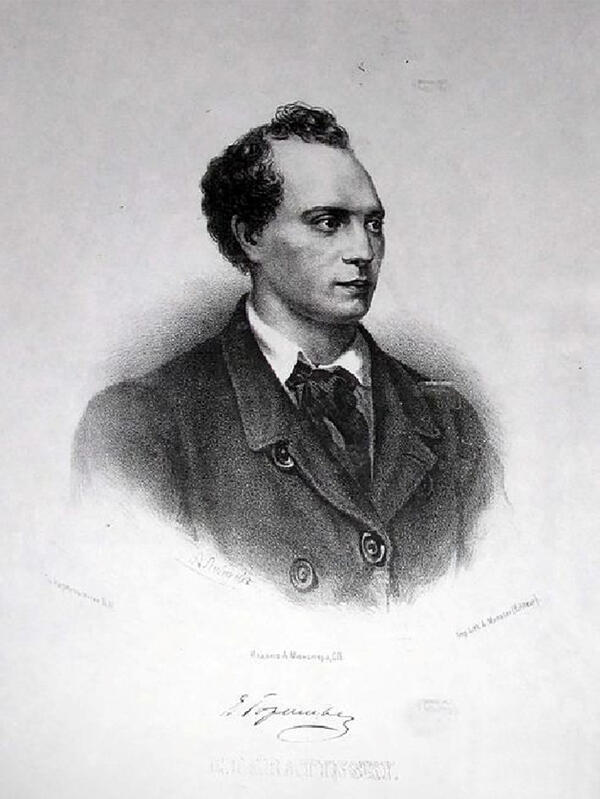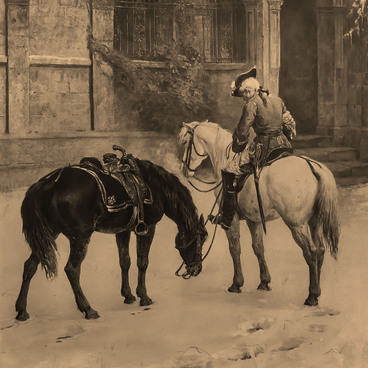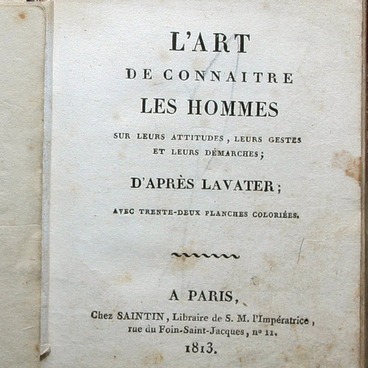The lithograph is made from one of the best preserved portraits of Yevgeniy Boratynskiy. The drawing was created for the book ‘A Portrait Gallery of Russian Personalities’. The book included more than 200 portraits and biographical features of figures of science and art, famous military leaders and state employees. Two volumes were published in Petersburg in 1865 and 1859.
Each volume of this book included autographed portraits of the characters in the story. Most of the biographical texts were written by Mikhail Khmyrov (who lived from 1830 to 1872), a renowned writer, historian and archivist. An exception was an essay dedicated to the life and creativity of Evgeniy Boratynskiy. His biography was written by the son of the poet Lev Boratynskiy.
The book published by Alexander Münster remains one of the most important works in the field of Russian portrait iconography. The first volume of the publication combined portraits of chancellors, ministers, members of the Council of State, field marshals and admirals. The second volume was devoted entirely to the persons of science, literature and art. It included the history of Boratynskiy together with the portrait.
Münster made a lithograph using a drawing created by Alexander Lebedev, an illustrator and portrait painter. He was a graduate of the Academy of Arts, author of magazine cartoons and lithographed albums, and illustrated works by Alexander Pushkin, Mikhail Lermontov, Ivan Krylov and many other Russian poets and writers. However, he was not the author of the original portrait.
The real author hides behind the hardly distinguishable inscription ‘from the painting by N.N’. What the painting is meant and who is behind the initials remains a mystery. It can only be assumed that the author was either familiar with Boratynsky in the last years of his life (as can be seen from the preserved photograph of the poet of the early 1840s, similar to the present image), or saw his death mask taken in Naples immediately after his death.
The portrait included in the book undoubtedly conveys the most characteristic features of the appearance of Boratynskiy. First of all, attention is drawn to the high forehead, wide brow bridge and high cheekbones - the striking traits depicted in all the known images of the poet.
Each volume of this book included autographed portraits of the characters in the story. Most of the biographical texts were written by Mikhail Khmyrov (who lived from 1830 to 1872), a renowned writer, historian and archivist. An exception was an essay dedicated to the life and creativity of Evgeniy Boratynskiy. His biography was written by the son of the poet Lev Boratynskiy.
The book published by Alexander Münster remains one of the most important works in the field of Russian portrait iconography. The first volume of the publication combined portraits of chancellors, ministers, members of the Council of State, field marshals and admirals. The second volume was devoted entirely to the persons of science, literature and art. It included the history of Boratynskiy together with the portrait.
Münster made a lithograph using a drawing created by Alexander Lebedev, an illustrator and portrait painter. He was a graduate of the Academy of Arts, author of magazine cartoons and lithographed albums, and illustrated works by Alexander Pushkin, Mikhail Lermontov, Ivan Krylov and many other Russian poets and writers. However, he was not the author of the original portrait.
The real author hides behind the hardly distinguishable inscription ‘from the painting by N.N’. What the painting is meant and who is behind the initials remains a mystery. It can only be assumed that the author was either familiar with Boratynsky in the last years of his life (as can be seen from the preserved photograph of the poet of the early 1840s, similar to the present image), or saw his death mask taken in Naples immediately after his death.
The portrait included in the book undoubtedly conveys the most characteristic features of the appearance of Boratynskiy. First of all, attention is drawn to the high forehead, wide brow bridge and high cheekbones - the striking traits depicted in all the known images of the poet.



